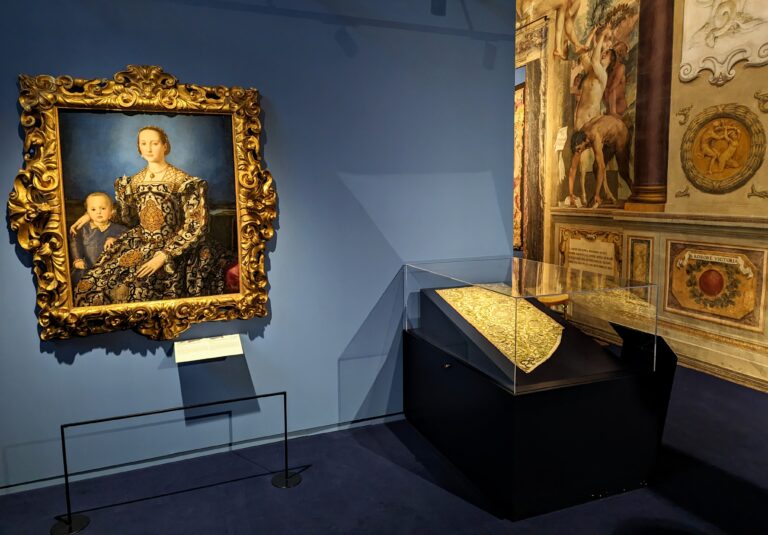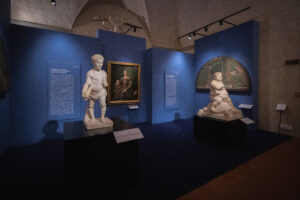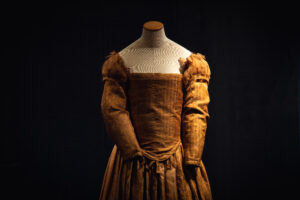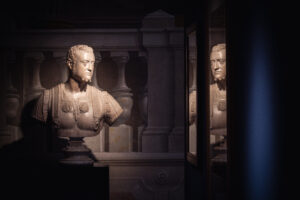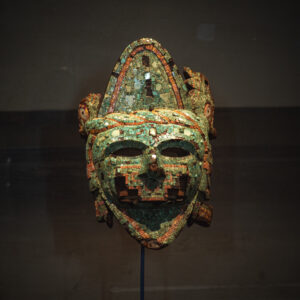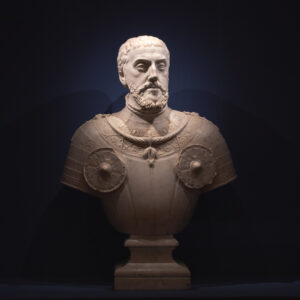ELEONORA DI TOLEDO, THE GRANDE DAME OF THE SIXTEENTH CENTURY: THE UFFIZI GALLERIES CELEBRATE THE LEGENDARY DUCHESS OF FLORENCE IMMORTALIZED IN AGNOLO BRONZINO’S PORTRAIT WITH A LARGE EXHIBITION DEDICATED TO HER LEGACY
An icon of beauty, a fashion innovator and trendsetter, a powerful political leader, and a passionate art patron: in the magnificent halls of the Treasury of the Grand Dukes in the Pitti Palace until May 14, over one hundred works of art, including paintings, sculpture, drawings, historical costumes and jewels, tell the story of the life and cultural importance of one of the most important women in the history of the Renaissance
Director Eike Schmidt: “a gifted manager and a true arbiter of taste: she was the Anna Wintour of her day”
Starting tomorrow in Florence, the largest exhibition ever dedicated to the “Grande dame of the Sixteenth Century“: over 100 works, with major international loans, paintings, drawings, tapestries, costumes, jewels and gems will recount the life, personality and extensive cultural impact of Eleonora di Toledo.
Wife of Cosimo de’ Medici, who after her death became Grand Duke, duchess and head of state in Florence, a politically powerful woman, the true founder of the Boboli Gardens, as they are called today, but also an iconic beauty, Eleonora was a fashion innovator and trendsetter in her day, a passionate patron of the arts, a dazzling (if rare) example of female authority and charisma in the Renaissance.
Eleonora di Toledo and the Invention of the Medici Court in Florence, the exhibition at the Uffizi Galleries. Photo Gallery
Daughter of the Viceroy of Naples, don Pedro de Toledo, Eleonora was endowed with exceptional managerial skills and played a fundamental role in the construction of the Medici court, introducing Spanish court etiquette in Florence, revolutionizing the fashions of the elite, contributing to the transformation of the Tuscan landscape. Equally as ambitious as her husband, with whom she worked closely to realize important objectives: reinforce the stability of the state, ensure that her eldest son succeeded to the ducal title and that her second son obtained a cardinalate, improve Cosimo’s title from duke to grand duke, a goal achieved only after Eleonora’s premature death at the age of forty from tuberculosis.
The maxi exhibition, organized by the Uffizi Galleries and curated by Bruce Edelstein, professor of art history at New York University Florence, may be seen from February 7 to May 14 in the magnificent halls of the Treasury of the Grand Dukes on the ground floor of the Pitti Palace. Entitled Eleonora di Toledo and the Invention of the Medici Court in Florence, the exhibition is divided into seven sections.
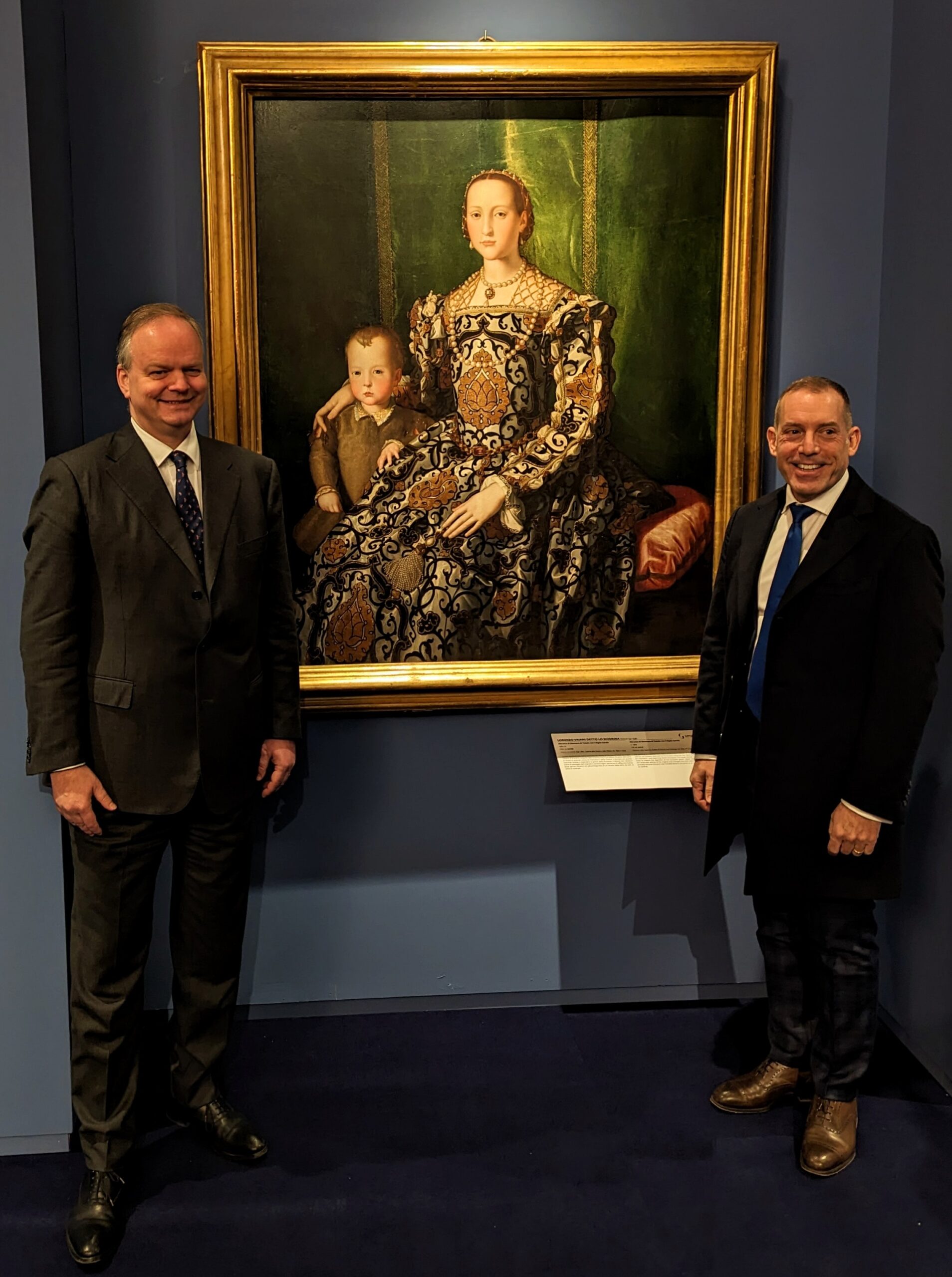
CHILDHOOD AT THE COURT OF NAPLES
The first section of the exhibition recounts Eleonora’s childhood in Naples, one of the largest cities in Europe at the beginning of the sixteenth century. Among the most influential figures for her formation are, of course, her parents: her father, Pedro de Toledo, viceroy of Naples, an exceptional patron of palaces, villas and gardens, and her mother María Osorio Pimentel, who inherited the marquisate of Villafranca, the seat of the noble title later conferred on her husband. María’s importance in the dynamics of the imperial court is confirmed by the fact that Margaret of Austria, the illegitimate daughter of Charles V, was confined to her care, in preparation for her marriage to the first duke of Florence, Alessandro de’ Medici. Their betrothal was one of the highlights of the festivities that took place in Naples during the winter of 1535-36, when the emperor made his triumphal entry into the viceregal capital following his naval triumph in Tunis.
KEY WORK:
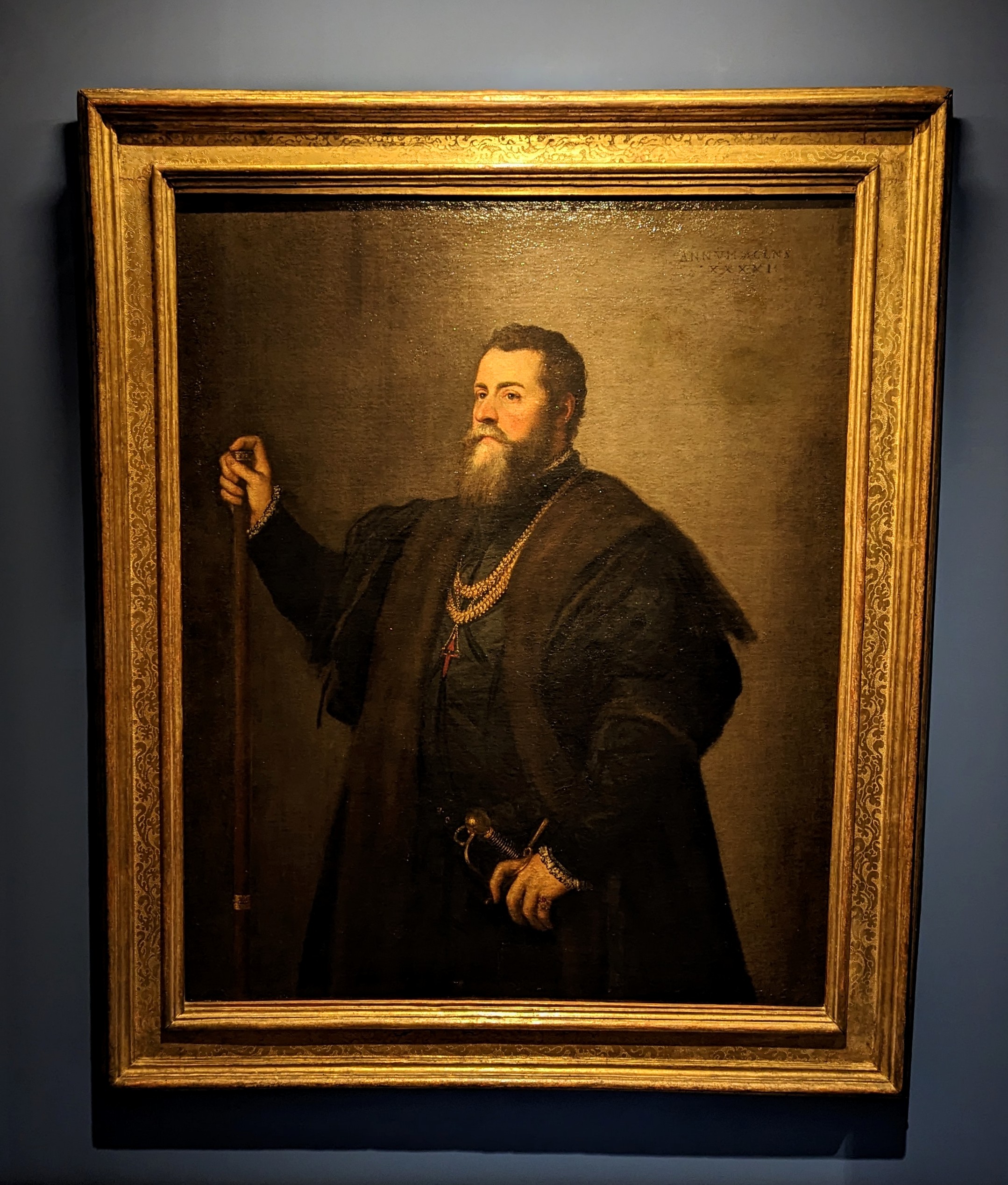
ARRIVAL IN FLORENCE
Eleonora’s triumphal entry into Florence, following her proxy marriage to Cosimo in Naples, was stupendous. Her arrival was celebrated with maximal pomp, as Florentine society gained greater international prestige through the new ducal court. The festivities are evoked in the exhibition through drawings, musical scores and others that recall those displayed in the courtyard of the Medici Palace for the occasion; on display are also the rings found in her tomb, one of which may have been received for her wedding, preserved in the Treasury of the Grand Dukes at the Uffizi.
KEY WORK:
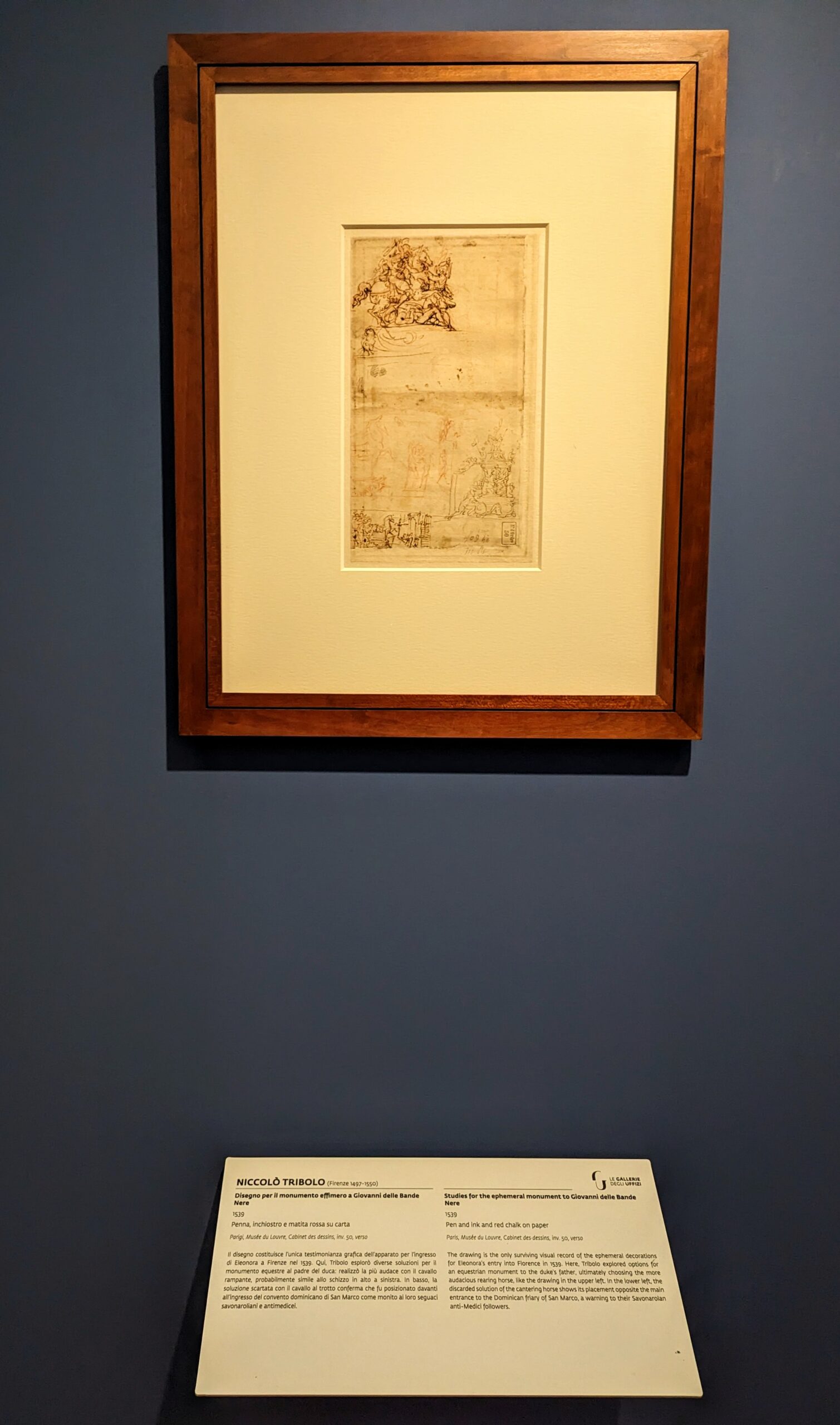
ELEONORA’S ELEVEN CHILDREN
Eleonora and Cosimo had eleven children together. Caring for the family’s interests and the provision of a large number of children were among her primary goals. The assassination of the first duke of Florence, Alessandro de’ Medici, and the lack of legitimate heirs had provided Cosimo with the opportunity to be chosen as his successor with relative ease. The birth of the first child, Maria, occurred in the year following Eleonora’s arrival in the city. The second child was the male heir, who arrived after a fruitful pilgrimage to the Franciscan sanctuary of La Verna and was named Francesco. Following rapidly after were, Isabella, the future duchess of Bracciano, Giovanni, who would be elected cardinal, Lucrezia, who became duchess of Ferrara, Garzia, Ferdinando, who also became a cardinal before becoming grand duke, and Pietro, in addition to three children who died prematurely shortly after their births, Pietro called “Pedricco”, Antonio and Anna. Eleonora played a fundamental role in the education of her children and carefully crafted their public image, perpetuating their memory by having numerous portraits painted of them.
KEY WORK:
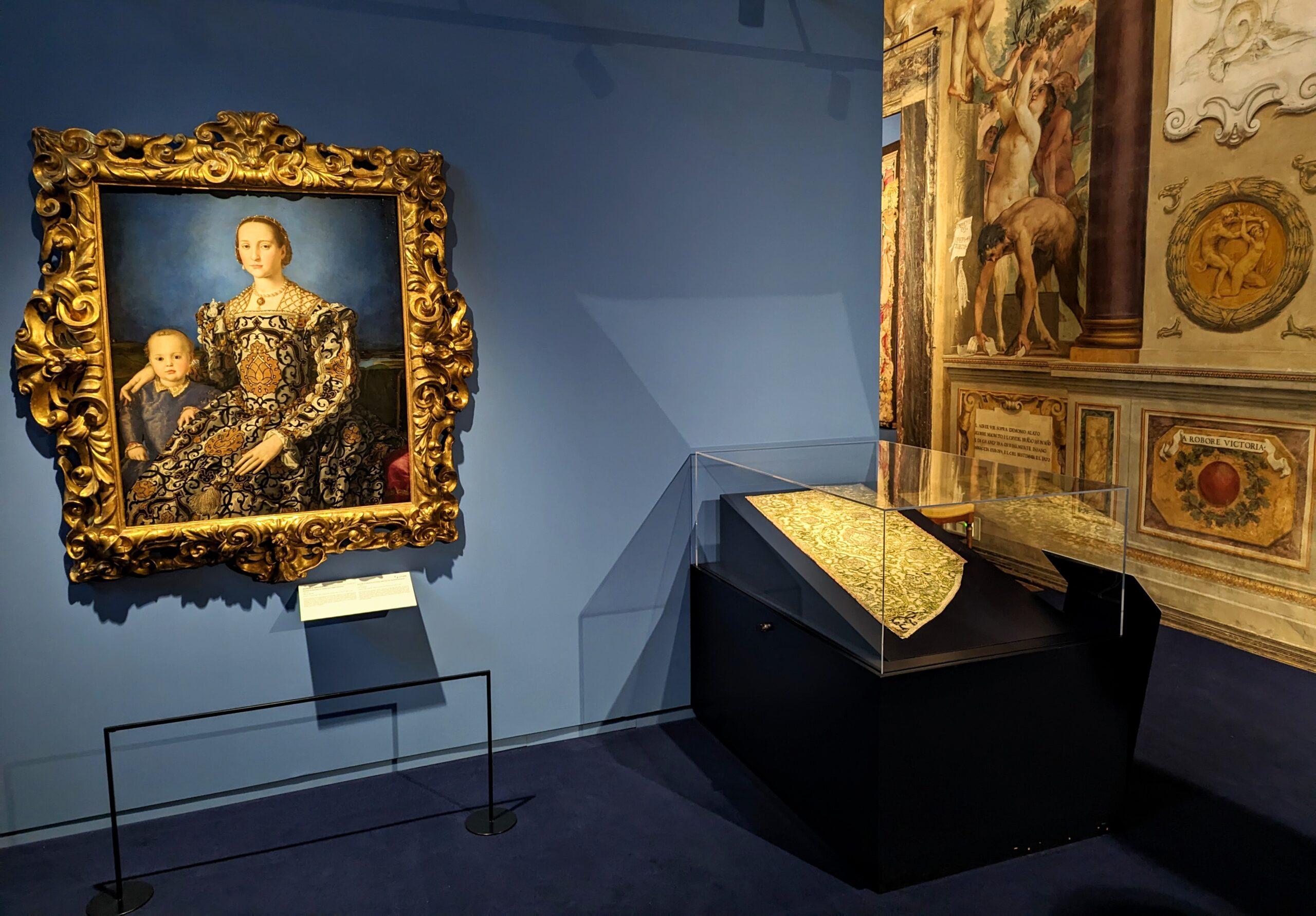
ELEONORA AND ART
The duchess inspired court patronage and commissioned numerous works from such important artists as Bronzino, Bachiacca, Salviati, Vasari and Stradano. Less than a year after her arrival and little over a month after the birth of her first child, Maria, Eleonora turned her attention to the creation of a residence appropriate for the needs of a noble court. The family abandoned the Medici Palace, and moved to the Palazzo Vecchio, where renovation works were quickly undertaken to transform the old seat of the Republic into the magnificent residence of the ducal family and their servants, with apartments reserved for prestigious guests of the court. Particular emphasis is given in the exhibition to Eleonora’s interest in the production of the Medici tapestry-works, founded by Cosimo.
KEY WORK:
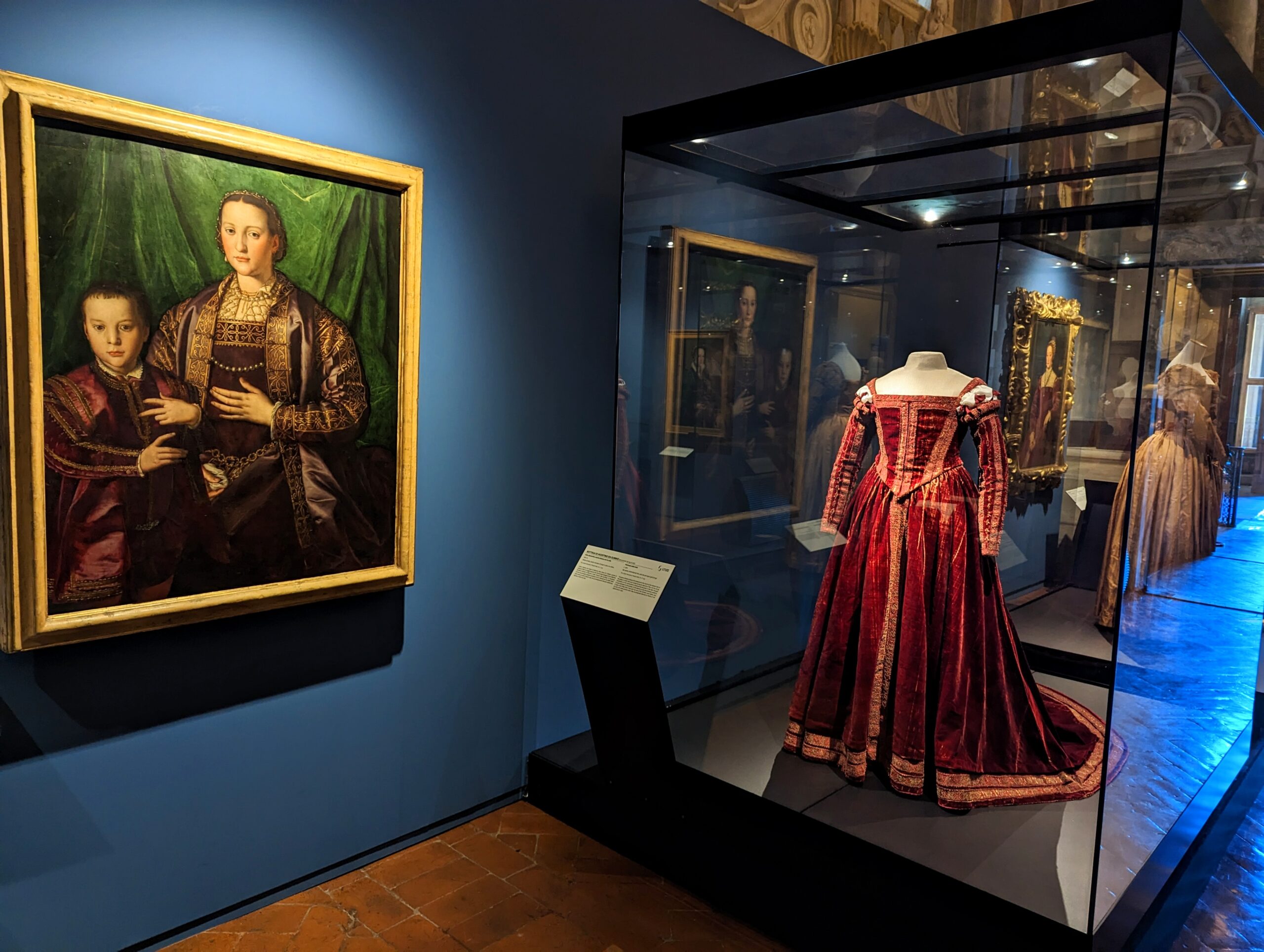
FASHION ICON IN SIXTEENTH-CENTURY FLORENCE
The impact of Eleonora’s style on the transformation of fashion in Florence was immense, as she imported fashions and garments in vogue at her father Pedro de Toledo’s court in Naples. Eleonora was directly responsible for choosing the attire of her children, her ladies-in-waiting, her husband, and the court. It was Eleonora herself who chose the wardrobe for her son Francesco, when at just seven years old he undertook his first public mission, traveling to Genoa to greet the future King of Spain Philip II, and for her son Giovanni, when he traveled to Rome in 1559, accompanied by Vasari, to obtain his cardinal’s hat. Of special importance in these rooms are the two double portraits that Bronzino painted of the princess with her sons, in one accompanied by the heir Francesco and in the other, the second son Giovanni.
KEY WORK:

HER LOVE FOR GARDENS AND THE “CREATION” OF BOBOLI
Eleonora was a great innovator not only in fashion but also in the development of green spaces. The most important work of the duchess’s patronage is undoubtedly the Boboli Gardens. Eleonora’s love for those spaces grew from her childhood in Naples, where her father had commissioned several princely residences where new garden typologies were developed. In Tuscany, Eleonora and Cosimo frequently resided at the villas of Poggio a Caiano and Castello, where they enjoyed passing time fishing and hunting. At Castello, the princely children were taught to hunt birds, probably by the famous court dwarf Morgante, a pastime that was also enjoyed in Boboli. Her passion for gardens and for life outside the urban center is closely connected to an economic strategy aimed at significantly increasing Medici landholdings, which were rendered lucrative through the cultivation of grain.
KEY WORK:

ELEONORA’S LEGACY
The last section of the exhibition is dedicated to Eleonora’s posthumous image and legacy. Portraits kept the memory of Cosimo’s consort alive (following his accession to the title of grand duke), including later depictions of her that show her aging and ill, or eternally young, as she was immortalized by Bronzino alongside her son Giovanni. Among the important cultural legacies of Eleonora were her interest in establishing a Jesuit presence in Florence, later supported by Bartolomeo Ammannati, her architect for the expansion of the Pitti Palace, and his wife, Laura Battiferri, the famous poet who was closely tied to the duchess, and the foundation established in her will for a monastery of noblewomen dedicated to the Immaculate Conception.
KEY WORK:
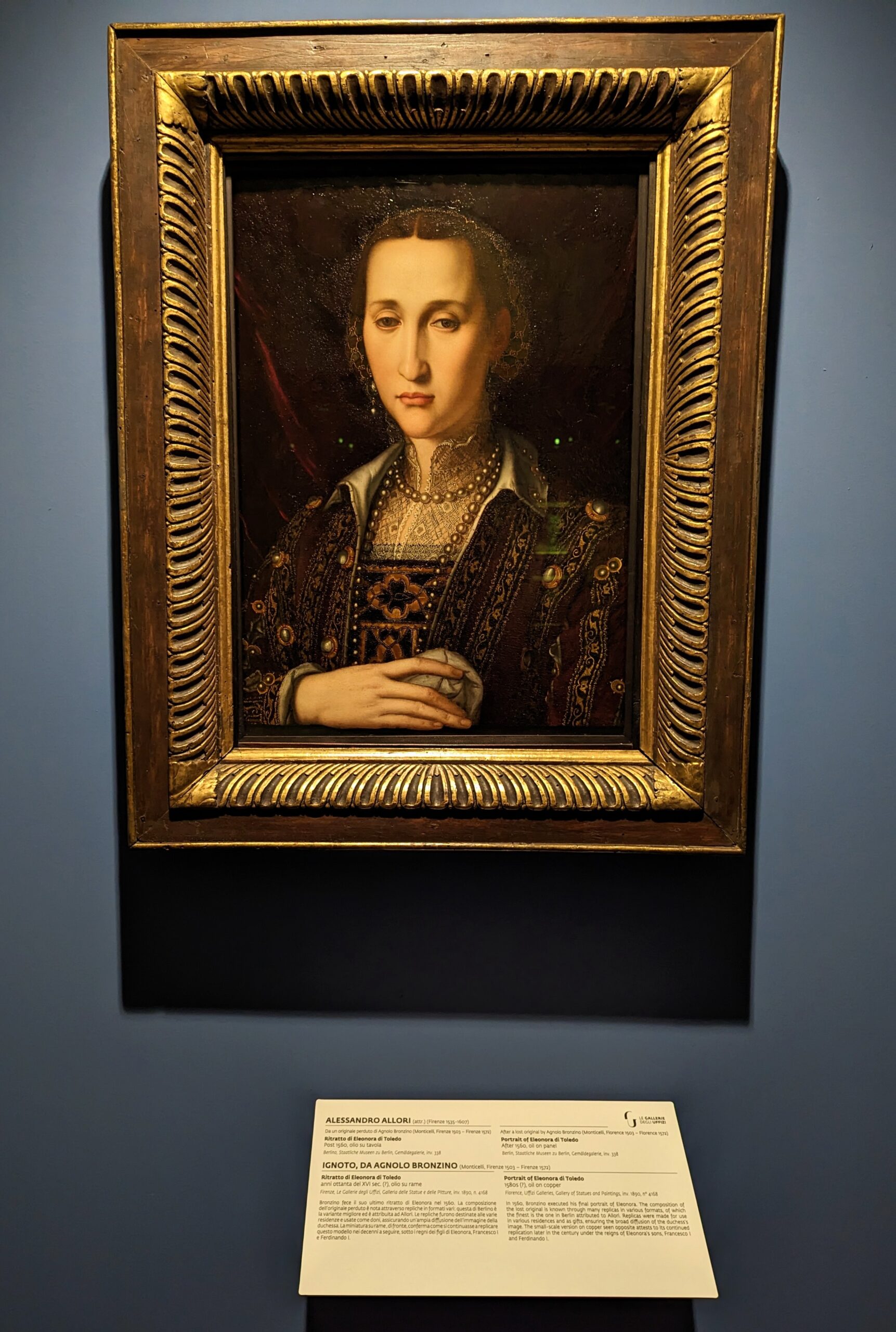
The director of the Uffizi Galleries Eike Schmidt: “As is well known, the history of the Medici in Florence ended with a great lady, Anna Maria Luisa de’ Medici, who signed the Family Pact on October 31, 1737, ensuring that the artistic and cultural treasures of the dynasty were not sold or dispersed but that they would remain in the city and in Tuscany. No less important was the sixteenth-century noblewoman who established the foundations of the princely state, Eleonora di Toledo, whose impact on the city of Florence can still be seen today: one could think of the Palazzo Vecchio, adapted to create her apartment, decorated by some of the greatest painters of the time, and where she resided from 1540; to the Boboli Gardens and the Pitti Palace, acquired in February 1550 by the duchess with her own funds and transformed according to her own ideals for the project, actively overseen by her, a true estate managed. Together with Vittoria Colonna, Eleonora was one of the great female patrons, not only of artists but also of poets and scholars. But that’s not all. Like the Duchess of Mantua Isabella d’Este, the Spanish princess transplanted to Florence had a weakness for fine clothes and was a true arbert of taste, almost an Anna Wintour of her day”.
EXHIBITION INFORMATION
TITLE: Eleonora di Toledo and the Invention of the Medici Court in Florence
PLACE: Treasury of the Grand Dukes, Pitti Palace
DATES: February 7 – May 16
TYPE: Renaissance Art
CURATOR: Bruce Edelstein
CATALOG: edited by Sillabe
Press release from the Uffizi Galleries for the exhibition Eleonora di Toledo and the Invention of the Medici Court in Florence.

